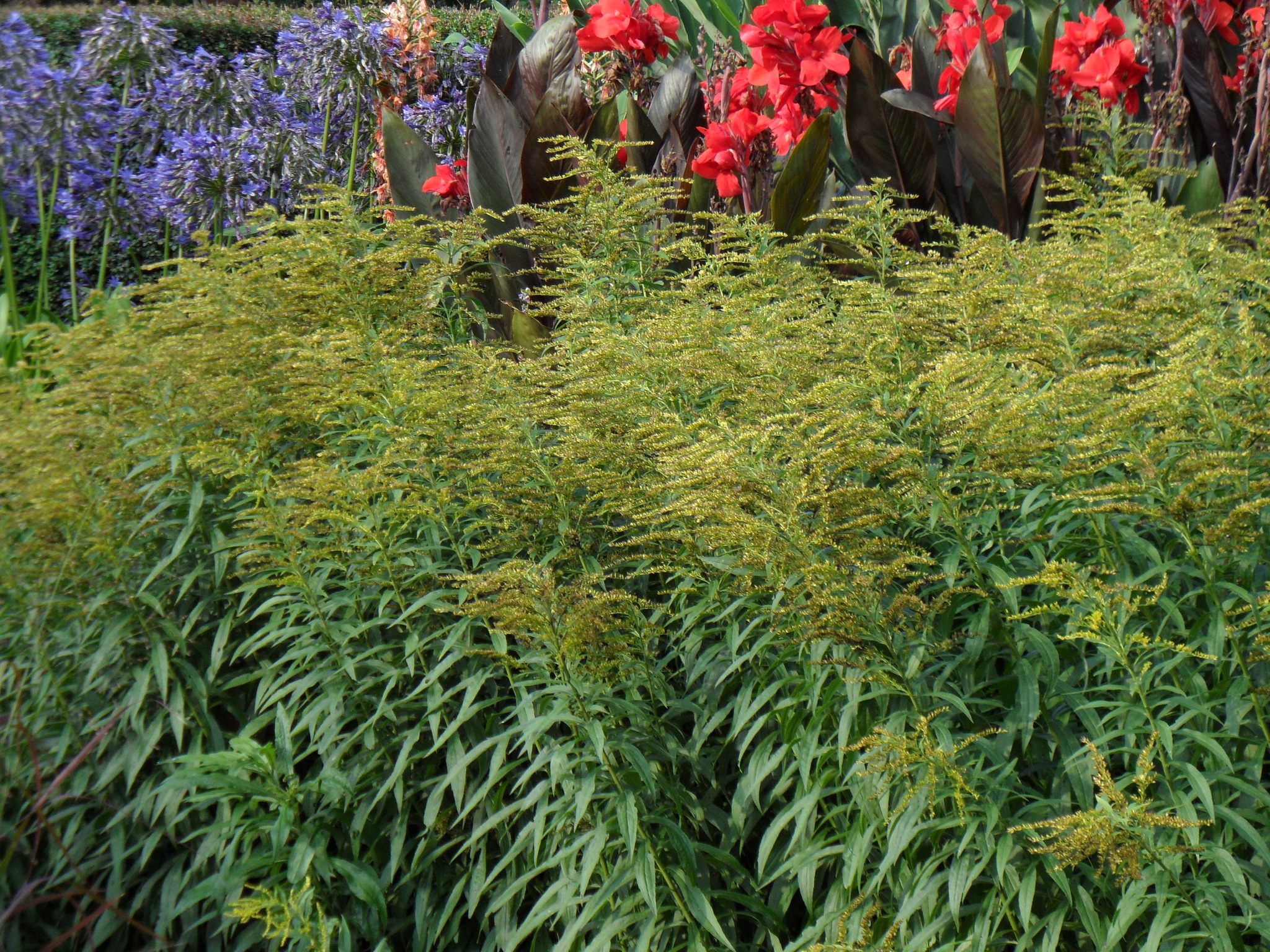
Latin solidus — make whole, strengthen, a reference to the traditional healing properties of these plants.
Perennial herbs, often rhizomatous, glabrous to hairy. Stems erect, branching above. Leaves basal and/or along stems, alternate, margins usually toothed, mostly sessile. Capitula radiate, small, terminal or axillary, many in pyramidal or spike-like panicles, with stalks. Involucral bracts in many rows, overlapping, unequal. Receptacle flat. Ray florets female, ligulate, short, yellow, rarely white. Disk florets bisexual, tubular, yellow. Achenes cylindrical, hairy or glabrous. Pappus of barbed bristles.
One species has become naturalised in Australia.
Small capitula in elaborate dense terminal panicles; short inconspicuous ligules of ray florets.
About 150 species from N America, S America, Europe and Asia.
Beaudry & Chabot (1957).
Source: (2002). Dahlia. In: . Horticultural Flora of South-eastern Australia. Volume 4. Flowering plants. Dicotyledons. Part 3. The identification of garden and cultivated plants. University of New South Wales Press.
